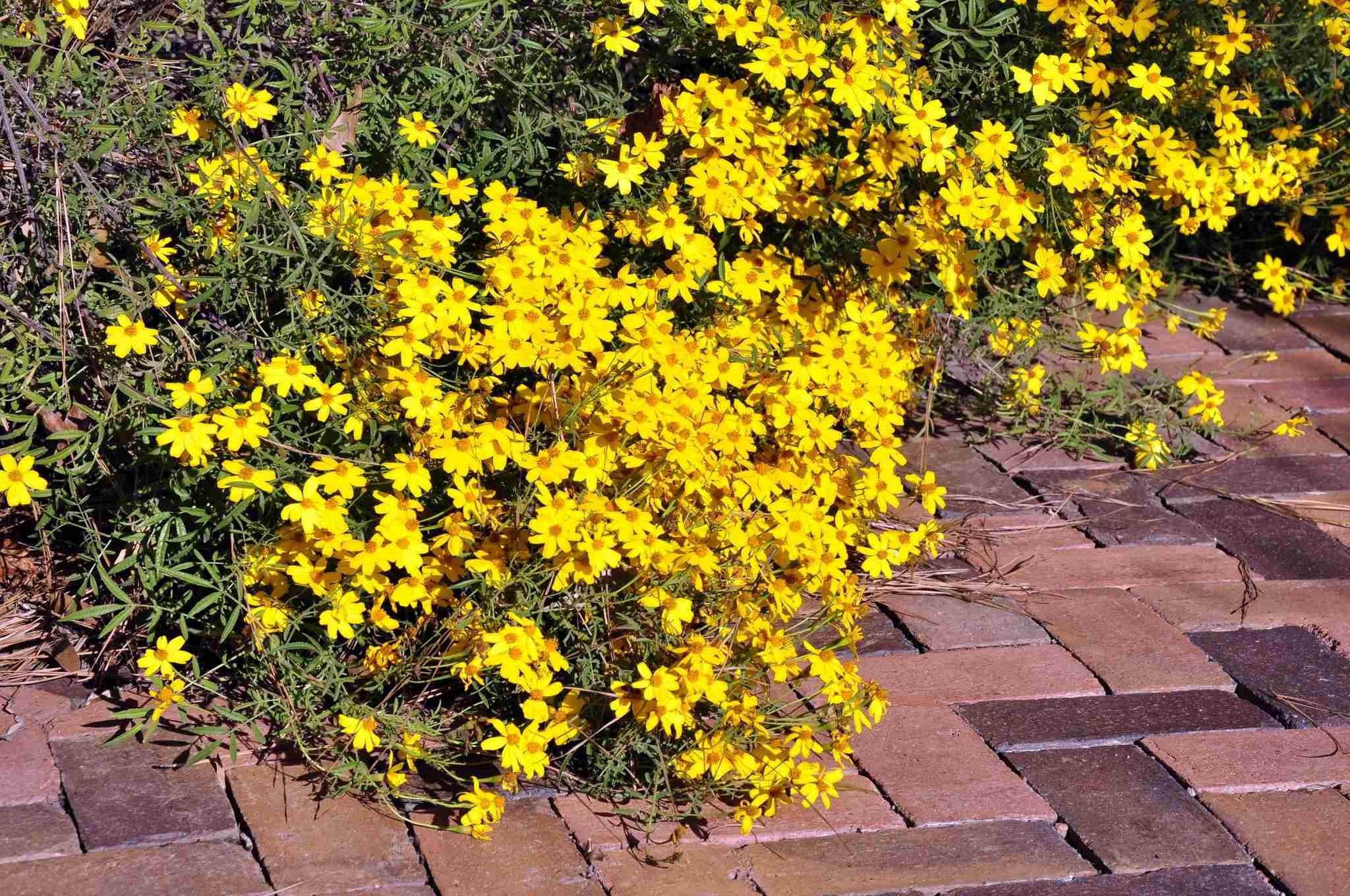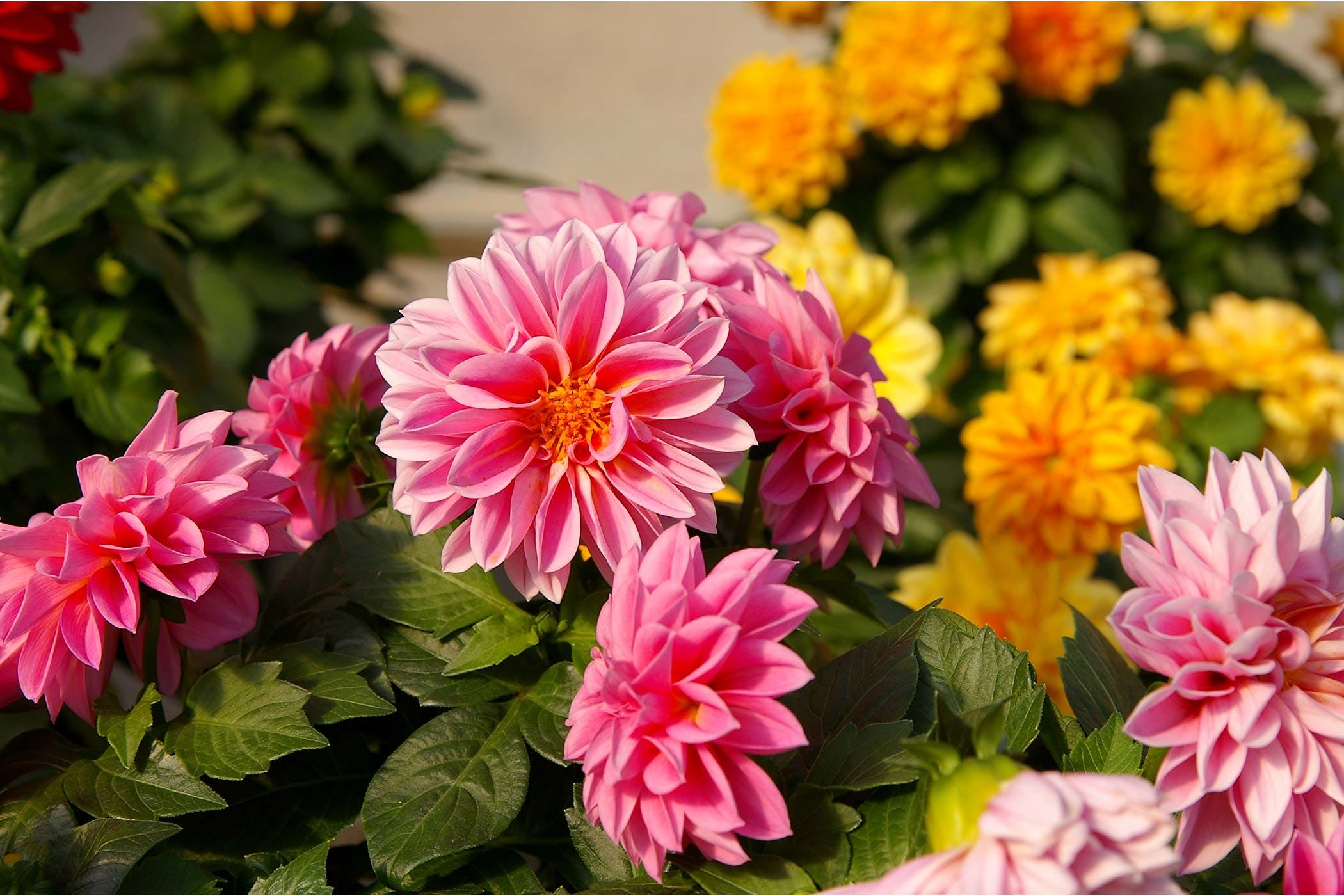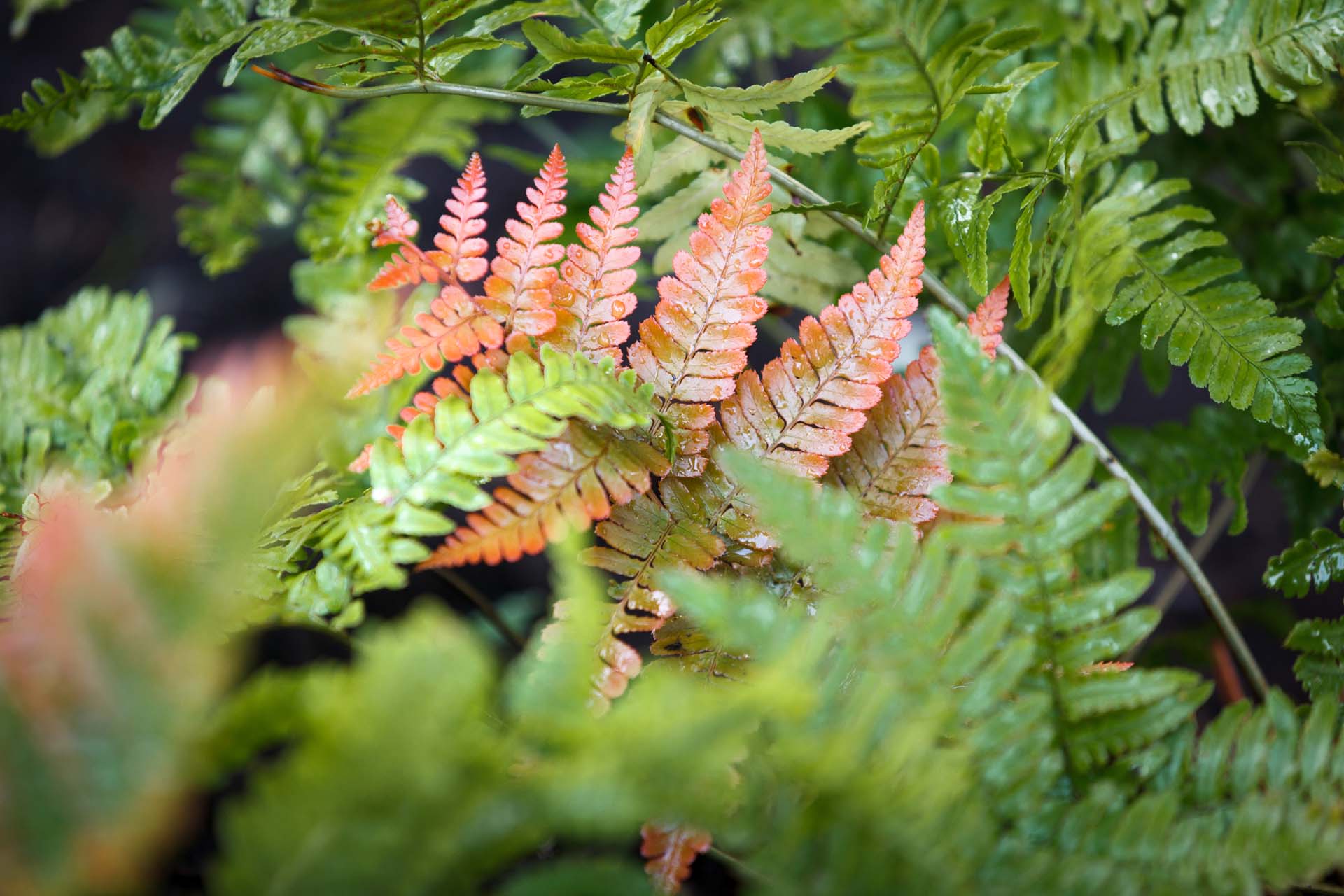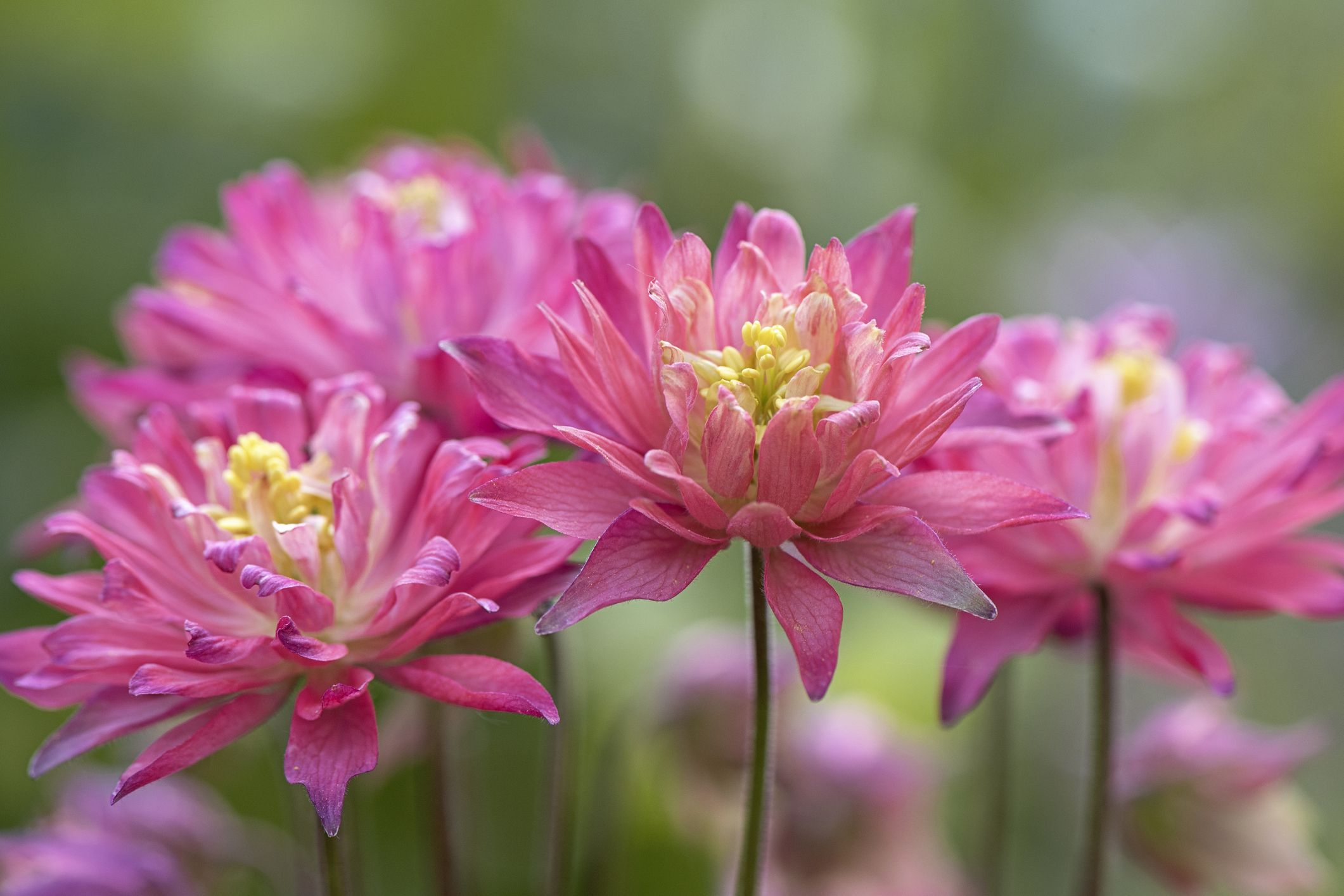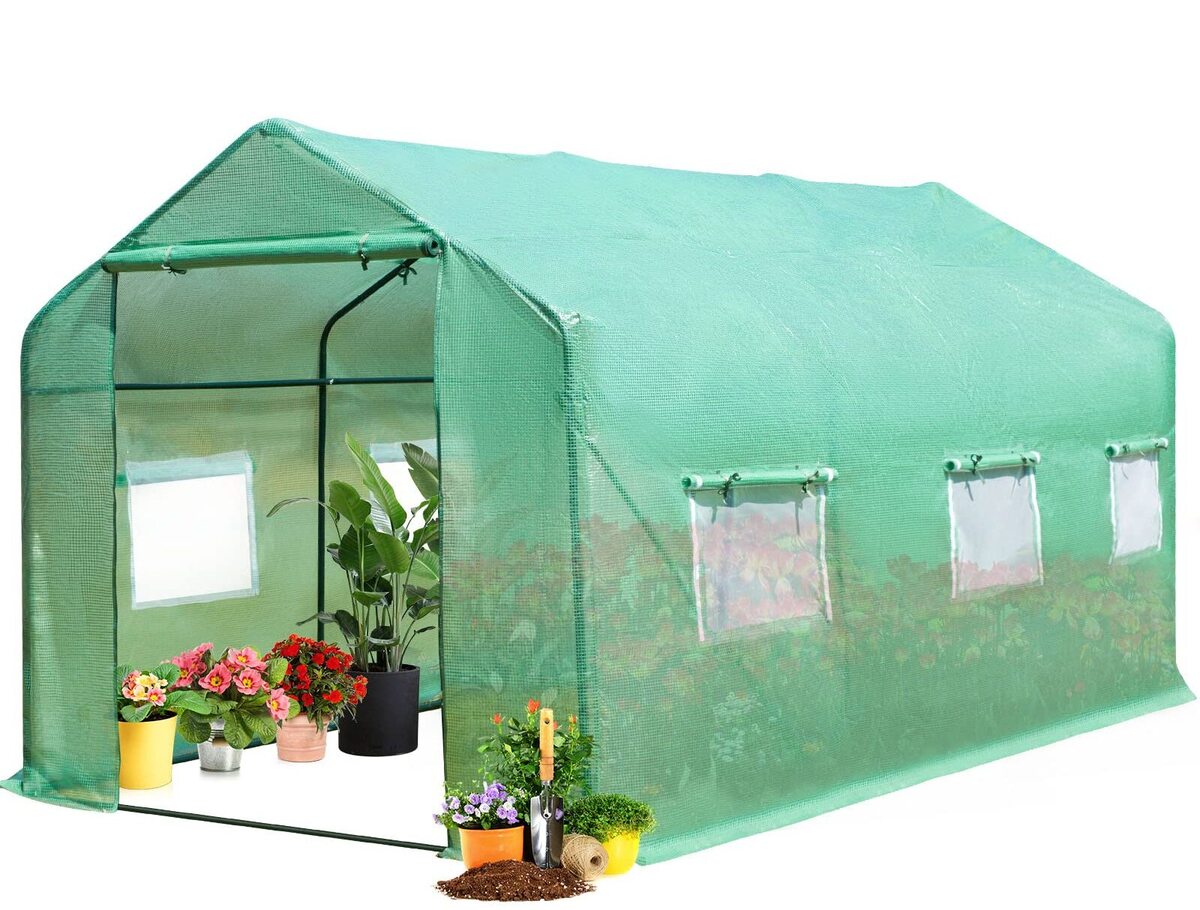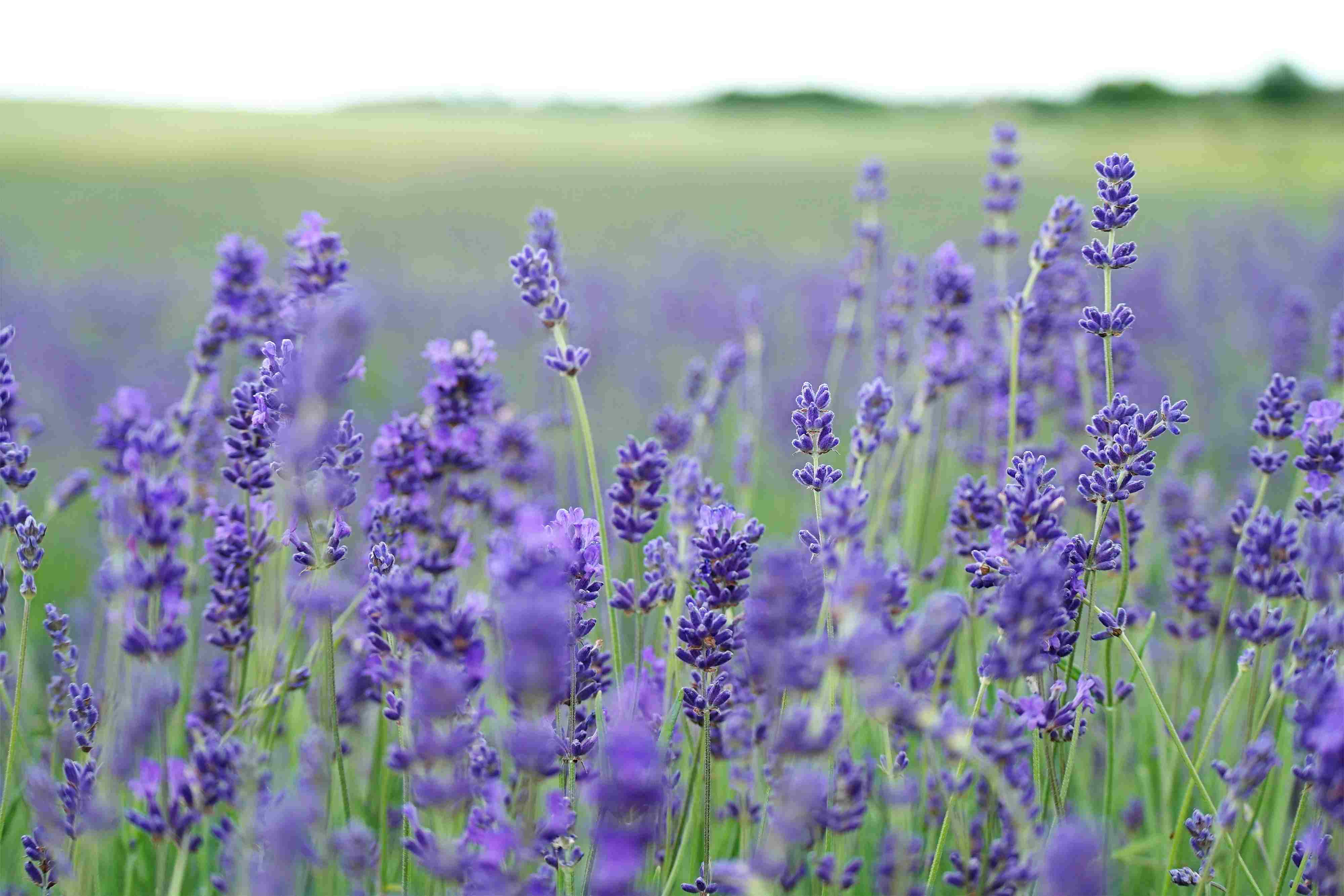Home>Gardening News and Trends>Gardening Trends>What Herbs Are Perennial In Zone 7
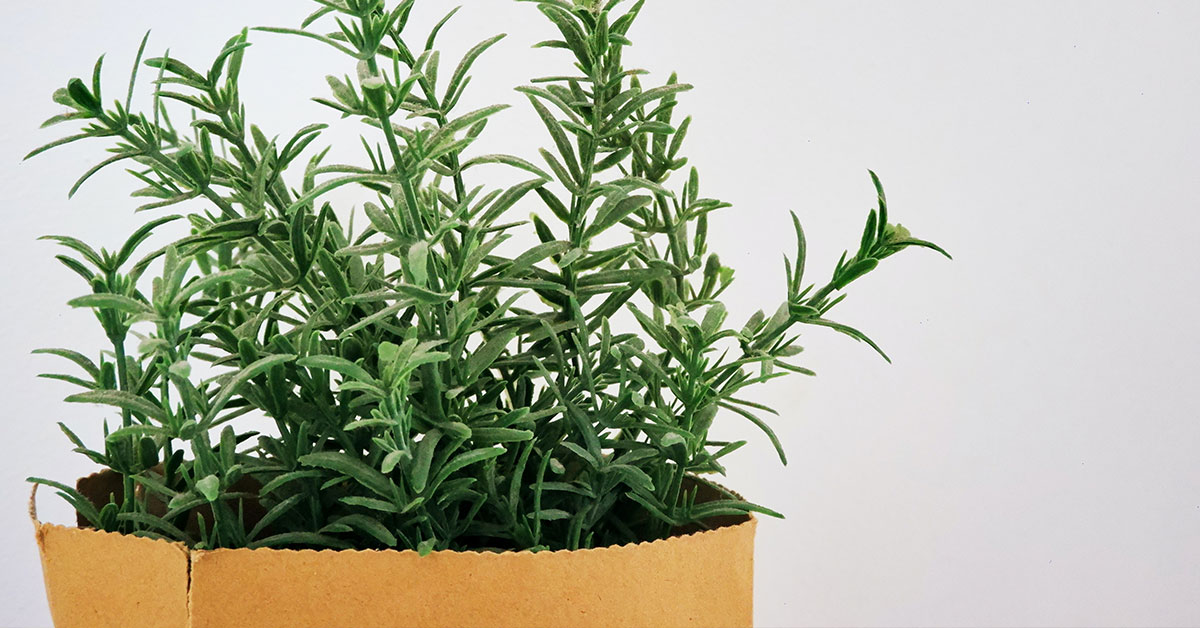

Gardening Trends
What Herbs Are Perennial In Zone 7
Modified: February 6, 2024
Discover the popular gardening trend of perennial herbs for Zone 7! Find out which herbs thrive in this climate and enhance your garden's beauty and flavor.
(Many of the links in this article redirect to a specific reviewed product. Your purchase of these products through affiliate links helps to generate commission for Chicagolandgardening.com, at no extra cost. Learn more)
Table of Contents
Introduction
Welcome to the world of gardening in Zone 7! If you are a gardening enthusiast living in this particular zone, you are in for a treat. Zone 7 is known for its moderate climate, making it an ideal region for a wide variety of plants to thrive.
With the right knowledge and planning, you can create a beautiful and bountiful garden filled with perennial herbs that will provide you with endless culinary delights and aromatic pleasures year after year.
But what exactly does Zone 7 mean? The United States Department of Agriculture (USDA) has divided the country into 13 different hardiness zones, with Zone 1 being the coldest and Zone 13 the warmest. Zone 7 typically encompasses areas with average annual minimum temperatures ranging from 0 to 10 degrees Fahrenheit (-17 to -12 degrees Celsius).
These moderate temperatures allow for a longer growing season compared to colder zones, giving gardeners in Zone 7 the opportunity to cultivate a wide range of plants, including herbs.
In this article, we will explore some popular perennial herbs that flourish in Zone 7. These herbs are not only easy to grow but also offer a plethora of benefits, from enhancing the flavors of your dishes to attracting beneficial insects and adding beauty to your garden.
So, without further ado, let’s dive into the world of perennial herbs and discover the wonders they can bring to your Zone 7 garden.
Understanding Zone 7
Before we delve into the specific herbs that thrive in Zone 7, it’s essential to have a deeper understanding of this particular gardening zone. Zone 7 is characterized by its moderate climate, with average annual minimum temperatures ranging from 0 to 10 degrees Fahrenheit (-17 to -12 degrees Celsius).
This zone is known for its mild winters and relatively long growing season, allowing gardeners to enjoy a wide range of plant diversity. While Zone 7 may experience occasional freezes and frost, the temperature generally remains above freezing for a significant portion of the year.
With these climatic conditions, Zone 7 offers the perfect environment for perennial herbs to flourish. Perennial herbs are plants that live for more than two years, and they have the incredible ability to regrow each spring. Their established root systems enable them to survive the colder months and come back stronger year after year.
One advantage of gardening in Zone 7 is the option to grow both perennial and annual herbs. While perennial herbs will provide a continuous supply of fresh flavors and aromas, annual herbs can be interplanted to add variety and a burst of color to your garden.
When planning your garden in Zone 7, it’s crucial to consider other factors beyond temperature, such as soil type, sunlight exposure, and water availability. Different herbs have varying requirements, so it’s essential to choose herbs that are well-suited to your specific garden conditions.
Another aspect to keep in mind is the microclimates within Zone 7. Due to variations in elevation, proximity to bodies of water, and other landscape features, certain areas within Zone 7 may experience slightly different conditions. It’s always a good idea to know your local microclimate and adapt your herb selection accordingly.
Now that we have a basic understanding of Zone 7 and its gardening potential, let’s take a closer look at some of the most popular perennial herbs that thrive in this zone. These herbs are not only attractive and flavorful but also low-maintenance, making them perfect for both experienced and novice gardeners alike. Get ready to add a touch of perennial magic to your Zone 7 garden!
Perennial Herbs for Zone 7 Gardens
Zone 7 offers a wonderful opportunity for gardeners to grow a wide range of perennial herbs that can thrive in its moderate climate. These herbs are not only resilient but also add flavor, fragrance, and beauty to your garden. Here are ten perennial herbs that are well-suited for Zone 7 gardens:
- Rosemary: Known for its distinctive aroma and robust flavor, rosemary is a popular perennial herb in Zone 7. It requires full sun and well-drained soil, making it perfect for garden borders or containers.
- Thyme: Thyme is a versatile herb that comes in various flavors and varieties. It can tolerate dry conditions and is an excellent addition to savory dishes. Plant it in a sunny location with well-drained soil.
- Mint: Mint is a vigorous herb that spreads quickly, so it’s best planted in containers or confined areas. It prefers partial shade and well-drained soil. Mint leaves can be used in teas, desserts, and cocktails.
- Sage: Sage is a hardy herb that adds depth to your culinary creations. It thrives in full sun and well-drained soil, adding a beautiful touch of gray-green foliage to your garden.
- Lavender: Lavender is prized for its lovely fragrance and calming properties. It thrives in sunny locations with well-drained soil. The aromatic flowers can be used for teas, sachets, or as a lovely addition to desserts.
- Oregano: Oregano is a flavorful herb that brings a taste of the Mediterranean to your garden. It requires full sun and well-drained soil. Harvest the leaves before the plant flowers for the best flavor.
- Chives: Chives are easy to grow and add a subtle onion-like flavor to dishes. They thrive in well-drained soil and prefer full sun. Use the edible purple flowers to garnish salads and soups.
- Parsley: Parsley is a versatile herb that adds freshness and color to your culinary creations. It prefers partial shade and moist, well-drained soil. Harvest the leaves as needed for your recipes.
- Lemon Balm: Lemon balm is a lemon-scented herb that is known for its calming properties. It thrives in partial shade and well-drained soil. Enjoy the leaves in teas, salads, or desserts.
- Tarragon: Tarragon is an essential herb in French cuisine, known for its distinctive flavor. It requires full sun and well-drained soil. As a perennial herb, it will come back year after year, providing you with its unique taste.
By incorporating these ten perennial herbs into your Zone 7 garden, you can create a beautiful and fragrant oasis while adding delightful flavors to your culinary endeavors. Remember to provide the appropriate growing conditions and care for each herb, and you’ll be rewarded with a vibrant and thriving herbal paradise.
Rosemary
Rosemary is a perennial herb that thrives in Zone 7 gardens and is a favorite among gardeners and chefs alike. Known for its distinctive pine-like fragrance and robust flavor, rosemary is a versatile herb that can elevate the taste of a wide range of dishes.
One of the advantages of growing rosemary in Zone 7 is its ability to tolerate a variety of soil conditions. It prefers well-drained soil but can adapt to sandy or clay soils as well. It is important to avoid planting rosemary in areas with excessive moisture, as it can lead to root rot.
When it comes to sunlight, rosemary loves the sun. It requires at least six hours of direct sunlight per day to thrive. The warm and sunny conditions of Zone 7 provide the perfect environment for rosemary plants to flourish.
Rosemary can be planted in the ground or in containers. If planting in the ground, make sure to space the plants at least 2 to 3 feet apart to allow for air circulation and prevent overcrowding. In containers, choose a well-draining potting mix and ensure that the pots have drainage holes.
Pruning is an important aspect of rosemary care. Regular pruning not only helps maintain a compact and attractive shape but also encourages new growth. Prune in the spring to remove any dead or damaged branches and to shape the plant. You can also harvest rosemary leaves throughout the growing season to enjoy its culinary benefits.
In addition to its culinary uses, rosemary is also valued for its ornamental qualities. The evergreen shrub’s needle-like leaves and delicate blue flowers add beauty and texture to the garden landscape. It can be used as a hedge, a focal point in a mixed border, or even as a topiary.
Furthermore, rosemary is known to attract pollinators such as bees and butterflies, making it a beneficial addition to any garden. Its aromatic foliage also acts as a natural repellent for some pests, helping to protect other plants from potential damage.
Whether you are a novice gardener or an experienced herbalist, growing rosemary in your Zone 7 garden is a rewarding experience. With its culinary versatility, fragrance, and beauty, rosemary is an herb that will bring both joy and flavor to your outdoor space.
Thyme
Thyme is a perennial herb that thrives in Zone 7 gardens, adding both culinary and ornamental value to your outdoor space. With its fragrant leaves and delicate flowers, thyme is a versatile herb that can be used in a variety of dishes and as an attractive ground cover.
When it comes to growing thyme in Zone 7, it prefers full sun to partial shade and well-drained soil. It can tolerate dry conditions once established, making it an excellent choice for areas with less frequent watering.
Thyme comes in various flavors and varieties, including common thyme, lemon thyme, and creeping thyme. Each variety has its own unique taste and growth habit, providing gardeners with options to suit their preferences and garden designs.
One of the benefits of thyme is its ability to attract beneficial insects, such as bees and butterflies, to the garden. These pollinators play a crucial role in the health and productivity of the ecosystem and can also help to pollinate other plants in your garden.
Thyme is a low-maintenance herb that requires minimal care. Once established, it is relatively drought-tolerant and does not need frequent watering. However, it is important to monitor the soil moisture and water when necessary, especially during prolonged dry spells.
Pruning thyme is essential to maintain its compact and bushy shape. Regular trimming encourages new growth and prevents the plant from becoming woody. Prune the plant back in early spring to remove any dead or damaged branches and to promote fresh growth.
When harvesting thyme, you can snip sprigs of the herb as needed throughout the growing season. The leaves can be used fresh or dried for culinary purposes. Thyme is a staple in many Mediterranean dishes, adding a savory and earthy flavor.
Aside from its culinary uses, thyme can also be used as a ground cover or as part of a rock garden. The low-growing varieties, such as creeping thyme, create a beautiful carpet of foliage and flowers, adding texture and visual interest to your garden.
Whether you’re cooking up a flavorful dish or looking to add a splash of color to your garden, thyme is a versatile herb that thrives in Zone 7. Its aromatic foliage, culinary benefits, and ability to attract beneficial insects make it a valuable addition to any garden.
Mint
Mint is a popular perennial herb known for its refreshing aroma and versatility in the kitchen. With its ability to vigorously spread and grow, mint is an excellent addition to Zone 7 gardens, as its hardy nature allows it to thrive in various conditions.
When it comes to growing mint in Zone 7, it’s important to consider its tendency to be invasive. To prevent the plant from taking over your garden, it’s best to grow mint in containers or confined areas. This way, you can enjoy its benefits while keeping it under control.
Mint prefers partial shade to full sun and moderately moist, well-drained soil. While it can tolerate different soil types, the key is to ensure that the soil doesn’t become waterlogged, as excessive moisture can lead to root rot.
One of the advantages of growing mint is its ability to attract beneficial insects, such as bees and butterflies, which help with pollination. Mint’s fragrant flowers act as a magnet for these pollinators, enhancing the biodiversity and beauty of your garden.
When it comes to culinary uses, mint is a versatile herb that can elevate a wide range of dishes. Its leaves can be used fresh or dried to infuse drinks, add flavor to salads and desserts, and even create refreshing homemade herbal teas.
Mint also offers various health benefits. It is known for its soothing properties and can be used to relieve indigestion or calm an upset stomach. Additionally, mint leaves can be used topically to alleviate minor skin irritations and provide a cooling sensation.
Caring for mint is relatively simple. Regular watering is necessary to keep the soil consistently moist but not overly saturated. However, be cautious not to overwater, as mint is susceptible to root rot in waterlogged conditions.
To keep mint plants thriving, it’s important to regularly prune and harvest the leaves. Pruning helps to prevent the plants from becoming woody and encourages new growth. Harvesting the leaves regularly will not only provide you with fresh mint for your culinary needs but also help maintain the plant’s shape and vigor.
Whether you choose spearmint, peppermint, chocolate mint, or any other variety, growing mint in your Zone 7 garden can provide you with a fresh burst of flavor and fragrance. From culinary delights to natural remedies, mint is a versatile herb that is sure to enhance your gardening experience.
Sage
Sage is a hardy perennial herb that thrives in Zone 7 gardens, known for its aromatic leaves and culinary versatility. With its gray-green foliage and a wide range of flavors, sage is a valuable addition to any herb garden.
Growing sage in Zone 7 is relatively straightforward. Sage prefers full sun and well-drained soil, making it an excellent choice for garden beds or containers. It can tolerate a range of soil types, including sandy or rocky soil, as long as it has good drainage.
The key to successfully growing sage is to avoid overwatering. Sage is drought-tolerant and does not require frequent watering. It is best to allow the soil to dry out between waterings to prevent root rot. Once established, sage can withstand periods of dry weather.
One of the benefits of growing sage is its ability to attract beneficial insects, such as bees and butterflies, to your garden. These pollinators play a vital role in the ecosystem and can help promote the health and productivity of other plants in your garden.
Sage leaves are rich in essential oils, which give them their distinct flavor and aroma. These leaves can be used fresh or dried in a variety of culinary dishes, including roasted meats, stews, and stuffing. Sage also pairs well with other herbs like rosemary and thyme, further adding depth to your culinary creations.
In addition to its culinary uses, sage has been used for centuries for its medicinal properties. It is believed to have anti-inflammatory and antioxidant properties and may help improve digestion and support brain health. Sage tea is also known for its soothing effects and can be enjoyed as a calming herbal drink.
When it comes to care and maintenance, sage is a relatively low-maintenance herb. Pruning the plant regularly helps maintain its shape and encourages new growth. Prune sage in the spring or after flowering by cutting back the woody stems and removing any damaged or dead leaves.
With its flavorful leaves, ornamental value, and potential health benefits, sage is a wonderful herb to include in your Zone 7 garden. Whether you’re a culinary enthusiast or an herbalist, sage will bring warmth and depth to your dishes and garden, making it an indispensable addition to your herb collection.
Lavender
Lavender, with its delicate purple flowers and soothing fragrance, is a charming perennial herb that thrives in Zone 7 gardens. Not only does lavender add a touch of beauty to your outdoor space, but it also offers a multitude of benefits both in the garden and beyond.
When it comes to growing lavender in Zone 7, it’s important to provide it with the right growing conditions. Lavender prefers full sun, at least six to eight hours per day, and well-drained soil. It can tolerate drought conditions once established, making it an excellent choice for hot and dry climates.
Well-draining soil is crucial for lavender’s success, as it is susceptible to root rot in wet conditions. If your soil tends to hold moisture, consider planting lavender in raised beds or mixing in sand or gravel to improve drainage.
One of the main attractions of growing lavender in your garden is its captivating fragrance. Lavender flowers emit a calming and aromatic scent that can promote relaxation and stress relief. You can enjoy the calming effect by cutting fresh lavender stems and placing them in vases or making homemade lavender sachets.
Lavender is also a popular culinary herb, known for its unique flavor profile. The flowers and leaves can be used in various culinary creations, such as baked goods, teas, and infused syrups. Lavender’s floral and slightly sweet taste adds a delightful twist to both sweet and savory dishes.
In the garden, lavender has the added benefit of attracting pollinators, such as bees and butterflies. These beneficial insects play a crucial role in the pollination of plants, helping to promote the growth and development of other flowers and edible crops in your garden.
When it comes to maintenance, lavender is relatively low-maintenance once established. Prune the plant after flowering by trimming back about one-third of the stem length. This helps maintain the plant’s shape and encourages new growth. In addition, regular pruning prevents the plant from becoming woody and promotes better air circulation.
Whether you choose traditional English lavender, French lavender, or one of the many stunning hybrid varieties, growing lavender in your Zone 7 garden will bring beauty, fragrance, and a touch of tranquility. Take time to appreciate the delicate blooms and enjoy the versatility of this remarkable herb in both your culinary creations and overall well-being.
Oregano
Oregano is a flavorful and aromatic perennial herb that thrives in Zone 7 gardens, adding a burst of Mediterranean flavor to your culinary creations. With its pungent leaves and delicate flowers, oregano is a valuable addition to any herb garden.
When it comes to growing oregano in Zone 7, it prefers full sun and well-drained soil. Oregano can tolerate a variety of soil types, including sandy or rocky soil, as long as it has good drainage. It is a relatively low-maintenance herb that can withstand both drought and heat.
One of the benefits of growing oregano is its ability to attract pollinators to your garden. Bees and butterflies are drawn to the small, purple flowers of oregano, helping to enhance the ecosystem in your garden and promote the pollination of other plants.
The leaves of oregano are the main star when it comes to culinary use. The leaves can be used fresh or dried and are known for their bold and savory flavor. Oregano is a staple herb in Mediterranean cuisine, commonly used in dishes like pasta sauces, pizzas, and marinades.
To care for oregano, regular watering is necessary to keep the soil consistently moist but not overly saturated. It is best to water at the base of the plant to prevent the leaves from getting wet, which can lead to fungal diseases. However, oregano is relatively drought-tolerant once established.
Pruning oregano is essential to maintain its shape and encourage new growth. It’s best to prune the plant regularly, especially after flowering, by cutting back the stems to promote bushiness. Regular pruning also helps prevent the plant from becoming leggy or woody.
Harvesting oregano can be done throughout the growing season. You can snip off sprigs as needed for your culinary endeavors. If you want to preserve the flavor of oregano for future use, you can also dry the leaves by hanging them upside down in a well-ventilated area.
Whether you prefer Greek oregano, Italian oregano, or one of the many other varieties available, growing oregano in your Zone 7 garden will provide you with a delightful herb that adds depth and flavor to your dishes. So let your taste buds take a trip to the Mediterranean as you enjoy the savory delights of oregano.
Chives
Chives are a versatile and flavor-packed perennial herb that thrives in Zone 7 gardens. With their attractive grass-like leaves and delicate purple flowers, chives add beauty and a subtle onion-like flavor to your culinary creations.
Growing chives in Zone 7 is relatively easy as they are adaptable to various growing conditions. Chives prefer full sun but can tolerate partial shade. They prefer well-drained soil but can also thrive in clay or sandy soil. This makes them a great option for garden beds, containers, or even as an edging plant.
Chives are well-known for their charming purple flowers, which not only add visual appeal to your garden but also attract pollinators. Bees and butterflies are attracted to the nectar-rich flowers, helping to support the overall health and biodiversity of your garden.
When it comes to culinary use, chives are incredibly versatile. The tender leaves can be chopped and added to a variety of dishes such as soups, salads, omelets, and creamy sauces. They provide a mild onion-like flavor that is not overpowering.
Caring for chives is relatively low-maintenance. Regular watering is important, especially during dry periods, but be sure not to overwater as excessive moisture can lead to root rot. Chives benefit from occasional fertilization to promote growth and health.
Chives also require occasional pruning or harvesting to keep the plant looking neat and to encourage fresh growth. Simply snip the leaves close to the base of the plant, leaving a few inches for regrowth. Regular harvesting will promote thicker foliage and ensure a continuous supply of fresh chives.
Not only do chives provide culinary delight and visual appeal, but they can also be grown as a companion plant. Chives have natural pest-repellent properties and are known to deter certain insects such as aphids, making them a great addition to vegetable gardens.
Whether you choose to grow common chives or the garlic-flavored variety, incorporating chives into your Zone 7 garden will surely add a delightful touch. From their vibrant green foliage to their mild onion flavor, chives are a versatile herb that will enhance both your cooking and gardening experiences.
Parsley
Parsley, with its vibrant green leaves and fresh flavor, is a must-have perennial herb in any Zone 7 garden. Known for its versatility and nutritional benefits, parsley is not only a culinary staple but also a beautiful addition to your herb garden.
When it comes to growing parsley in Zone 7, it requires partial shade to full sun and moist, well-drained soil. Parsley is a hardy herb that can tolerate a range of soil types, making it suitable for various garden conditions.
One of the benefits of growing parsley is its rich nutrient content. It is an excellent source of vitamins A, C, and K, as well as minerals like iron and calcium. Adding parsley to your dishes provides a fresh and healthy boost to your meals.
In the kitchen, parsley is a versatile herb used in a wide range of culinary dishes. The leaves can be chopped and used as a garnish, added to salads, soups, stews, and sauces, or mixed into homemade pesto for an added depth of flavor.
Caring for parsley involves regular watering to keep the soil consistently moist. However, it’s important not to overwater, as parsley can be susceptible to root rot. Mulching around the base of the plant can help to retain moisture and suppress weed growth.
Pruning parsley regularly helps to promote bushiness and encourages new growth. Pinch or trim the outer leaves regularly, and the plant will continue to produce fresh leaves throughout the growing season.
Parsley is a biennial herb, which means it completes its life cycle over two growing seasons. In its second year, parsley will flower and produce seeds. When the flowers appear, it is a sign that the plant is nearing the end of its lifespan. However, many gardeners choose to let some of the plants go to seed to allow for self-sowing and continuous parsley growth in subsequent years.
In the garden, parsley attracts beneficial insects, such as hoverflies and parasitic wasps, which help with pest control. It also serves as a host plant for the caterpillars of swallowtail butterflies, adding to the biodiversity of your garden.
Whether you’re looking to enhance the flavors of your culinary creations or add a touch of freshness to your garden, parsley is a fantastic herb to grow in your Zone 7 garden. With its versatility, nutritional value, and vibrant green foliage, parsley is sure to delight both your taste buds and your visual senses.
Lemon Balm
Lemon balm is a delightful perennial herb that thrives in Zone 7 gardens, known for its refreshing lemony fragrance and wide array of culinary and medicinal uses. With its vibrant foliage and delicate flowers, lemon balm adds beauty and versatility to any herb garden.
When it comes to growing lemon balm in Zone 7, it prefers partial shade to full sun and well-drained soil. Lemon balm can tolerate a range of soil types, making it adaptable to various garden conditions.
As its name suggests, lemon balm emits a delightful citrusy aroma when its leaves are gently rubbed or crushed. This aromatic herb can be used in a variety of culinary creations, including teas, herbal infusions, salads, desserts, and even savory dishes. Its lemony flavor adds a fresh and tangy twist to any recipe.
In addition to its culinary uses, lemon balm has been traditionally used for its medicinal properties. It is known for its calming effects and is often used in herbal teas to promote relaxation and soothe nerves. Lemon balm is also believed to have antiviral and antibacterial properties, making it a valuable herb for natural remedies.
Caring for lemon balm is relatively easy. Regular watering is important to keep the soil consistently moist, especially during dry periods. However, overwatering should be avoided as it can lead to root rot. Mulching around the base of the plant can help retain moisture and suppress weed growth.
Pruning lemon balm is essential to prevent it from becoming too leggy or crowded. Regularly trimming the plant will promote bushiness and fresh growth. Prune lemon balm in the early spring to remove any dead or damaged stems and to encourage new shoots.
One of the benefits of growing lemon balm is its ability to attract beneficial insects, such as bees and butterflies, to your garden. These pollinators play a crucial role in the health and productivity of the ecosystem, helping to ensure the success of other plants in your garden.
In the garden, lemon balm is a wonderful companion plant. It repels certain pests, such as mosquitoes and gnats, making it a natural, fragrant addition to outdoor sitting areas or near windows and doorways.
Whether you’re looking to add a zesty flavor to your culinary creations or create a relaxing oasis in your garden, lemon balm is a delightful herb to grow in your Zone 7 garden. Its invigorating scent, culinary versatility, and medicinal benefits make it a valuable addition to any herb enthusiast’s collection.
Tarragon
Tarragon is a flavorful perennial herb that thrives in Zone 7 gardens, known for its unique taste and aromatic qualities. With its elegant foliage and culinary versatility, tarragon is a valuable addition to any herb garden.
When it comes to growing tarragon in Zone 7, it requires full sun and well-drained soil. Tarragon prefers slightly alkaline soil but can tolerate a range of soil types, making it adaptable to various garden conditions.
One of the key characteristics of tarragon is its distinctive flavor profile. The leaves have a mild anise-like taste with hints of licorice and sweetness. Tarragon is a staple herb in French cuisine and is commonly used in sauces, salad dressings, marinades, and egg dishes.
Tarragon is a low-maintenance herb that requires regular watering to keep the soil consistently moist, especially during dry periods. However, it’s important not to overwater, as excessive moisture can lead to root rot. Mulching around the base of the plant can help retain moisture and suppress weed growth.
Pruning tarragon is essential to maintain its shape and promote new growth. Regularly trim the plant to remove any dead or damaged stems, and pinch off the tips to encourage bushiness. Pruning also helps prevent the plant from becoming too woody.
One of the attractive aspects of growing tarragon is its ability to attract beneficial insects, such as bees and butterflies, to your garden. These pollinators play a vital role in the health and productivity of the ecosystem, enhancing the overall biodiversity of your garden.
In addition to its culinary uses, tarragon has been used in traditional medicine for its potential health benefits. It is believed to have digestive and appetite-stimulating properties, making it a valuable herb for herbal remedies and natural remedies.
Tarragon can also be propagated by dividing the plant or growing it from cuttings. This allows you to expand your tarragon collection or share it with fellow gardeners who appreciate the unique flavor and scent of this remarkable herb.
Whether you’re a gourmet cook or simply enjoy experimenting with flavors, growing tarragon in your Zone 7 garden is a delightful choice. Its alluring taste, ease of care, and ornamental value make it a cherished herb that will elevate your culinary creations and add a touch of elegance to your garden.
Conclusion
Zone 7 gardens provide a favorable environment for the growth and cultivation of a wide range of perennial herbs. These resilient and flavorful plants add beauty, fragrance, and culinary delight to your outdoor space. From the earthy aroma of rosemary to the tangy freshness of lemon balm, each herb brings its own unique qualities to enhance your garden and culinary experiences.
By understanding the specific needs of each herb, such as sunlight, soil conditions, and watering preferences, you can create a thriving herb garden in Zone 7. Whether you have a spacious backyard or a small balcony, there are options for everyone to enjoy the wonders of gardening with these perennial herbs.
When designing your Zone 7 garden, consider the various uses of these herbs beyond the culinary realm. Many also attract beneficial insects, promote biodiversity, and have potential medicinal benefits. Harness the power of these plants to not only enhance the beauty of your garden but also contribute to a healthier ecosystem.
Remember to regularly care for your herb garden through proper watering, pruning, and harvesting. This will ensure the longevity and productivity of your herbs throughout the growing season and beyond.
Whether you’re a seasoned gardener or just starting out, Zone 7 offers abundant possibilities for growing perennial herbs. Embrace the joys and challenges of gardening in this zone, and let the aromatic symphony and fresh flavors of these herbs transport you to a world of endless possibilities right in your own backyard.

